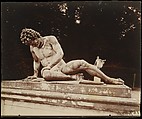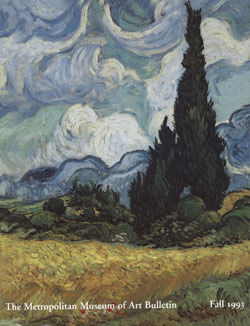Versailles, France
Eugène Atget French
Not on view
Although he studied drama in Paris in the mid-1870s and was an itinerant actor for some years thereafter, Eugène Atget's theatrical sensibility found its best outlet in a more deliberate, contemplative, and purely visual art form. In 1898 he began to photograph old Paris, and within a decade he had made a name as an assiduous documenter of the art and architecture of the ancien régime. Except for a brief attempt to capture life in the streets early in his career, Atget rarely photographed people, preferring the streets themselves as well as the gardens, courtyards, and other areas that constituted the cultural stage.
After the Great War, Atget frequently focused on mannequins, statues, and other "substitute" actors. At Versailles, where he had worked since 1901, he came to see the sculptures not as felicitous ornaments but as characters in an immemorial play. In this picture, which represents Michael Mosnier's replica of the "Dying Gladiator" in the Capitoline Museum in Rome, Atget contrasts human pain and artistic beauty, mortal man and the immortal soul. Drawing on his long experience relating near and far objects and vistas in the gardens of Versailles, the photographer juxtaposed the statues so that the figure of Apollo in the background seems to rise like the living spirit escaping the body at death.
Due to rights restrictions, this image cannot be enlarged, viewed at full screen, or downloaded.



